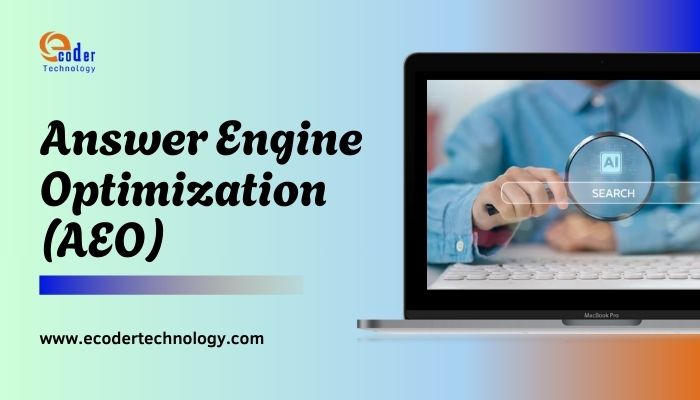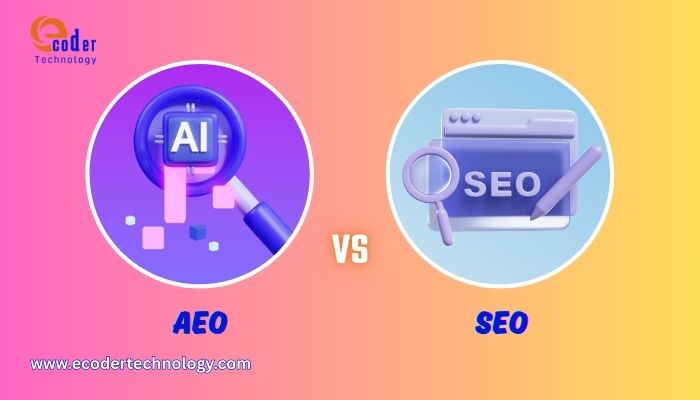
Nowadays, people don’t just want links to a product they’re looking for. They want clear and concise answers to what they are looking for – whether it’s the product’s features, price, or something else.
So, if you want to rank higher on the search engines, it’s important to focus on AEO – Answer Engine Optimization. You find the questions your audience is asking or searching for on the internet and answer them.
But the thing is – implementing AEO on your website isn’t as straightforward as it sounds here. So, let’s break it down and learn more about it.
AEO (answer engine optimization) is all about helping search engines give people what they’re looking for – simple & direct answers.
Instead of optimizing for search engine rankings, you’re shaping your content to show up when users want quick, concise answers.
A good example of AEO are FAQs. They are usually written in a question-answer format and address different queries directly.
No fluff. No misinformation. Nothing.
It’s 2025, isn’t it? The time on our hands is quite short, and we don’t really have the time to dig through a thousand-word article to find only a single fact. Most of us usually use an AI assistant, like Google or Alexa, and ask them whatever we want to know. And in return, we expect a snappy reply.
That’s why AEO is so critical. It’s not about clicks anymore. It’s about presence. Show up with relevant answers or risk getting skipped entirely.
You probably already know a few of these, but we’ll list down the best options here anyway. Google is obviously the most popular answer engine available out there, and it keeps on changing thanks to the regular updates.
While Bing has gone through some changes in the past, it has become a reliable option in 2025. Siri and Alexa have been there for a long time, especially if you are using an Apple product or have a smart house.
Example of How an Answer Engine Works (Source: Google)
Instead of simply crawling your content, these answer engines also summarize whatever you’ve written in it. This, in turn, helps them offer a concise answer to the users even before they click on a link.

AEO and SEO are quite different, albeit being parts of a search engine-based ecosystem. Here’s what you need to know about it –
SEO has always been about getting traffic by ranking specific keywords and improving your website through a strong backlink profile.
However, an answer engine optimization focuses on immediacy. Instead of merely helping you search for an answer, it brings the answer to you on a plate.
In SEO, the focus is mostly on visibility. However, AEO believes more in utility and aims to deliver the value right there in the SERP.
There was a time when people simply typed keywords like ‘best pizza NYC’ and were done with it. However, now, we have become much more sophisticated with writing our search queries.
For example, if I am thinking about buying a pizza, here’s what I’d write – “where’s the best pizza place near me that’s open late.” This is what’s called user intent – clear, conversational, and looking for a quick answer.
AEO exists to catch up with these minute nodes and help the user find what they are looking for. Traditional SEO just can’t keep up with this.
With SEO in mind, we have to create in-depth guides that provide real value, strategically use keywords, and build meaningful backlinks that amplify our reach. AEO, on the other hand, tells us to cut the fluff and use FAQs, bullet points, and schema to offer a tailored answer.
You are not writing for humans alone anymore. You’re delivering answers to a machine that will be talking to one.
Answer engines are technically much more advanced than common SEO. Therefore, if you want to implement it correctly in your system, you’ll have to know and learn about the following –
These tools use Natural Language Processing (NLP) and AI to ‘go through’ your content and understand what’s written in it. After that, they can create a gist of it and rephrase the same into concise answers.
Google snippets, ‘People Also Ask’ dropdowns, and knowledge panels are prime AEO real estates. They’re designed to provide direct answers immediately.
If your content’s structured well, you’re in. If not? You’re invisible – even if your content is on the first page.
Schema is basically the nerdy, behind the scenes stuff that makes your content readable for answer engines. By tagging info correctly, you can show your write-up in a quick question-answer format.
A good AEO strategy usually works with four structural pillars to make your content more search engine-friendly. Here’s what you need to know about it –
Adding structured data makes your website more readable to machines. It’s how you tell Google, ‘Hey, this is a product review.’ And if you want to make your content even more “searchable,” adding schema will do the job for you.
You can try writing in an engaging tone, but there’s no need to be poetic. Your content needs to be clear and offer the information you sought out to answer. Make sure your answers are punchy and scannable for better results.
A good writing style for AEO should include using bullets, breaking your content in short paragraphs, and straightforward language. The article should read like you are writing answers to a bunch of questions related to each other.
Google just doesn’t see words in whatever content you’ve written. It checks for concepts, relationships, and relatability.
The better you can relate your content to known ideas, the better chance you’ve got of showing up with relevant answers.
There are five ways in which you can optimize your content for AEO and make it rank higher on search engines. These may include –
Your optimization journey should start by searching for questions people are asking related to your products or services. In this case, tools like Answer the Public, People Also Ask (Google) and forums can be really helpful for you.
Yes, adding schema markup can help search engines understand your content better and place it somewhere in the ‘People Also Ask’ section. So, don’t forget to add ‘FAQ Schema, How-to Schema, and Review Schema in your content.
Don’t keep giant blocks of text in your article. Instead, it’s always better to break them into smaller paragraphs and divide the same with headings, bullet points, and a clear flow. This way, bots can spot the concise answers first.
While you are writing your article, show your experience, expertise, authoritativeness, and trustworthiness through your writing. It’s how you leverage AEO to actually stick in those featured spots.
If your site’s slow or doesn’t work on mobile, forget about it. Nobody’s waiting for one website to load for one minute. And AEO depends on fast, responsive sites that deliver quick-answer formats seamlessly.
There are four practices you need to focus on if you are trying to rank your article through an AEO strategy. So, let’s learn more about it.
People speak differently than how they type their queries. So, in order to get into the eyes of Alexa or Google Assistant, you have to write the way people talk. And in this case, short answers and natural phrasing can bring great results.
Instead of simply writing content, create an ecosystem. It should include clusters that cover a topic from every angle. This strengthens authority and guides answer engines to the right information in your AEO checklist.
If you are looking to add an edge in your content, using AI tools to decode intent can be a great way to do it. They can spot patterns you might miss and help you create relevant answers and leverage AEO accordingly.
Finally, you have to track clicks, snippets captured, impressions, voice queries in order to check how your AEO strategy is working. Optimization doesn’t end once your content goes live – it keeps on evolving.
When it comes to creating and abiding by an AEO strategy – most of us tend to make quite a few common mistakes. For instance –
You cannot optimize for answer engines if your website is a complete mess. So, before you start writing, you have to make sure that it is –
Tech issues are considered to be one of the most critical blockers on any AEO checklist. So, be sure to work on them as efficiently as you can.
Adding schema markups is quite boring. However, if you end up skipping out on quick-answer formats, you’ll lose the chance of ranking on answer engines.
Sounding knowledgeable through your writing is good. But if you complicate the entire thing, answer engines won’t understand what you’re trying to convey. So, it’s best to write simple and short sentences.
In the upcoming future, AEO will be integrated with conversational AI to offer better feedback or answers on products or whatever a user is searching for.
Also, search is no longer going to be text-based. The impact of multimodal search (voice, images, video, etc.) is already present in the current market. So, your content has to work across formats to provide relevant answers.
If you are preparing for a zero-click future, it’ll be important to embed a conversational tone in your content. A rock-solid structure and excellent usage of H2s and H3s is also a must.
Let’s be real – Answer Engine Optimization (AEO) isn’t optional anymore. It’s how content gets seen in 2025. So, if you want to stay relevant, it’s important to embrace concise answers, structured content, and using tools to speak the language of answer engines. Good luck!